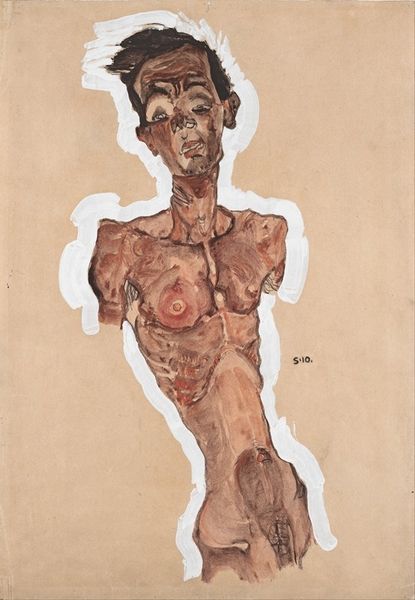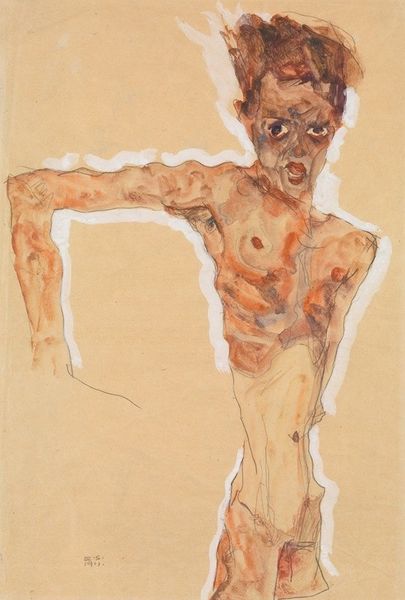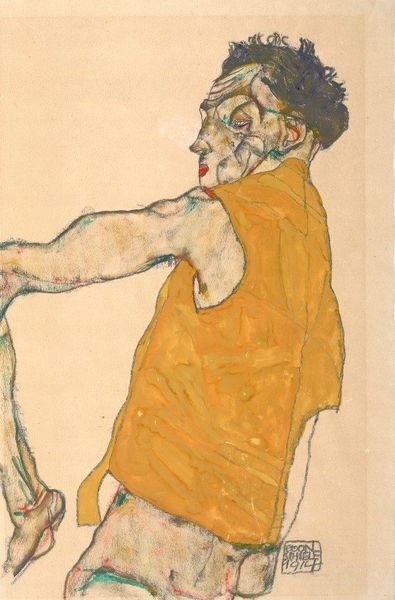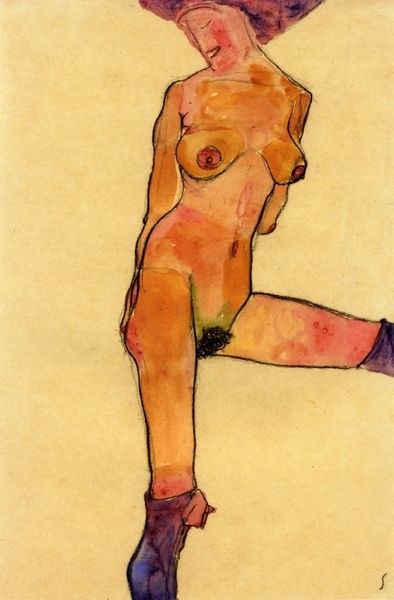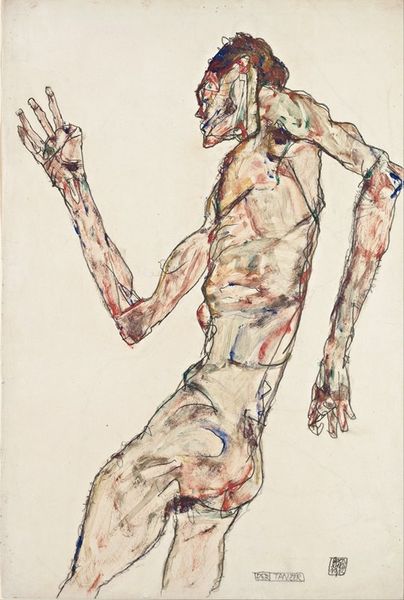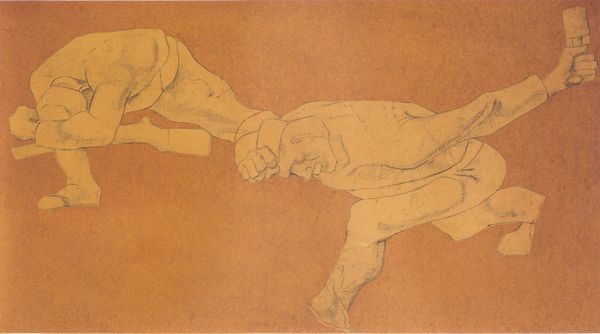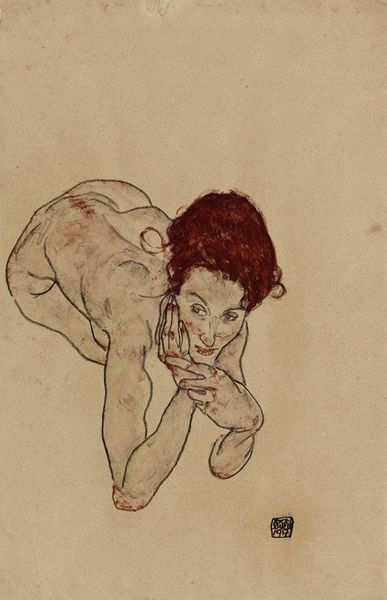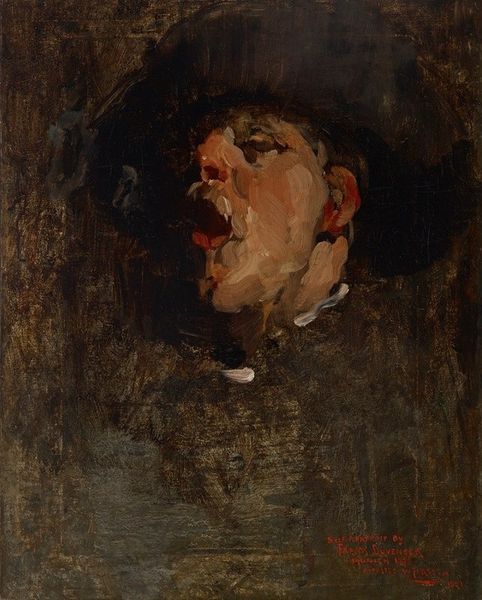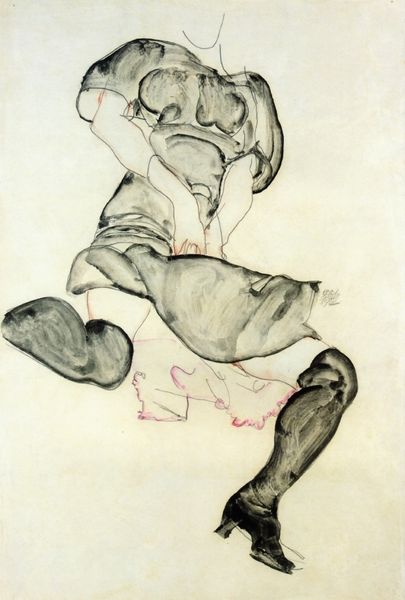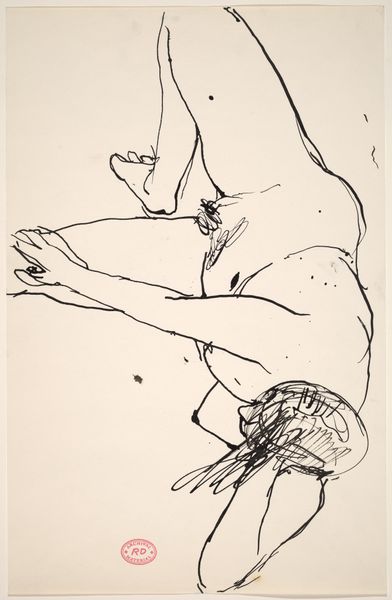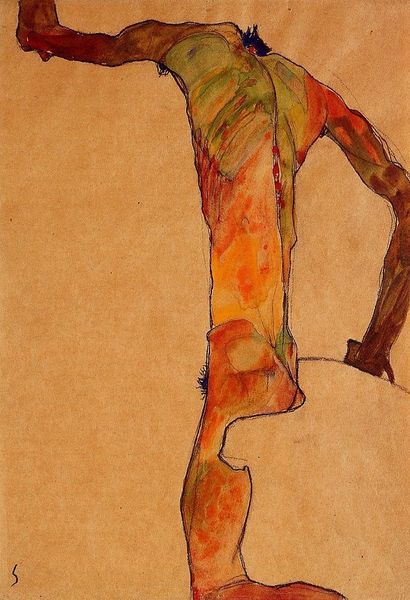
drawing, oil-paint, paper, ink
#
portrait
#
drawing
#
self-portrait
#
oil-paint
#
german-expressionism
#
paper
#
oil painting
#
ink
#
male-portraits
#
expressionism
#
portrait drawing
#
nude
#
male-nude
Dimensions: 43.1 x 27.5 cm
Copyright: Public domain
Editor: This is Egon Schiele's "Self Portrait Nude" from 1910. It appears to be an oil painting, possibly with ink, on paper, housed at the Albertina in Vienna. The figure's gauntness and somewhat pained expression really stand out. How do you interpret this work in the context of its time and Schiele's place within it? Curator: Well, expressionism, as an art movement, thrived on emotional intensity and challenged societal norms. Consider the social context: early 20th century Vienna, grappling with issues of identity, sexuality, and burgeoning psychological theories. The rawness and vulnerability in Schiele’s depiction, especially this deliberate rejection of classical idealized forms, reflect a broader cultural shift. Why do you think the painting resides in a museum today? Editor: Presumably, its art historical significance. Museums play such a pivotal role in validating and enshrining particular artistic visions. Curator: Precisely! Institutions like the Albertina, through their collecting practices, bestow a certain importance. However, this begs the question: what narratives do they choose to tell? Schiele, in his time, was controversial. His works challenged conventional notions of beauty and decorum, remember? Think of the power structures at play. Whose perspectives and values are prioritized? What gets deemed worthy of preservation and display? Editor: It is interesting how this provocative work became so valuable over time, given how different its role must have been at first, outside the museum space. What do you make of its success after initial controversy? Curator: His market success highlights the complexities of the art world. It invites critical analysis of how societal tastes evolve, influenced by movements, critical discourse, and of course, the art market. And what role museums play in driving value and, to some extent, public opinion, with every new acquisition, label text or curatorial direction. Editor: I guess I never thought about that. Thanks for offering such a unique historical point of view!
Comments
No comments
Be the first to comment and join the conversation on the ultimate creative platform.

